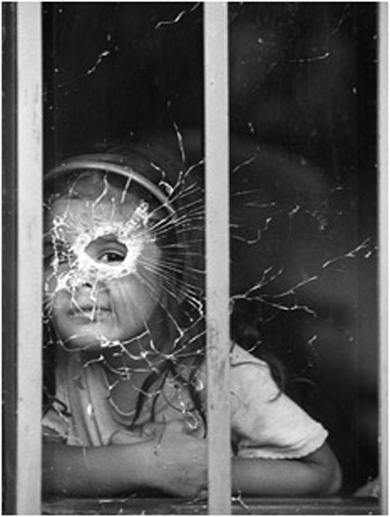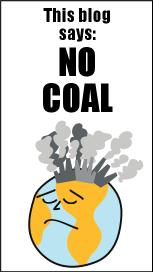 It is the crack of dawn on a Saturday and a small group of human rights workers are gathering at the Cali bus terminal (Colombia´s third largest city). After a 90 minute drive through stunning scenery we arrive at Cisnero, a village of the Nasa tribe with some Afro-Colombian families. The village lies along the transport rout between Cali and the pacific mega-port city of Buenaventura. With a mountainous and fertile terrain the region suffers badly from armed conflict, narco-trafficking and exploitation by trans-national companies that operate under the protection of state and paramilitary terror. Yet today is a happy occasion; the completion of a series of community workshops aimed at building resistance and permanence in the face of these atrocities.
It is the crack of dawn on a Saturday and a small group of human rights workers are gathering at the Cali bus terminal (Colombia´s third largest city). After a 90 minute drive through stunning scenery we arrive at Cisnero, a village of the Nasa tribe with some Afro-Colombian families. The village lies along the transport rout between Cali and the pacific mega-port city of Buenaventura. With a mountainous and fertile terrain the region suffers badly from armed conflict, narco-trafficking and exploitation by trans-national companies that operate under the protection of state and paramilitary terror. Yet today is a happy occasion; the completion of a series of community workshops aimed at building resistance and permanence in the face of these atrocities. In 2003 there was a wave of mass detentions across Colombia, carried out arbitrarily against civilians as part of President Uribe´s `Democratic Security´ policy. Cisnero was hit hard. During a market day of July that year, 54 people (including 5 women) were rounded up, accused of guerilla connections and imprisoned on charges of ´rebellion´. No proof was found to qualify any of these detentions. After 10 months they released the first group of 18 people. To date 12 remain in prison. Many of those released have been recharged and are in hiding or suffer regular police harassment.1
In 2003 there was a wave of mass detentions across Colombia, carried out arbitrarily against civilians as part of President Uribe´s `Democratic Security´ policy. Cisnero was hit hard. During a market day of July that year, 54 people (including 5 women) were rounded up, accused of guerilla connections and imprisoned on charges of ´rebellion´. No proof was found to qualify any of these detentions. After 10 months they released the first group of 18 people. To date 12 remain in prison. Many of those released have been recharged and are in hiding or suffer regular police harassment.1 To carry out this detention, the police used civilian informants that were paid in cash. This civilianization of the conflict (another element of Uribe´s ´Democratic Security´ policy) goes against the Geneva Convention. Sadly, Cisnero is only one of hundreds of Colombian communities in a similar plight. In the first 3 years of President Uribe´s rule there were 6,332 detentions of which at least 70% had strong arbitrary elements.2

“We as indigenous people don´t trust anybody”, exclaimed Martha a lady in her 50´s. The adjacent mountains are traditionally territory of the left insurgency. The arrival of the Colombian Army 3rd High Mountain Battalion has led to the deeper involvement of Nasa villagers in the armed conflict and a worsening of their human rights situation.3 “If we go up there they kill us, if we stay here they kill us, so we stay here and resist”. She went on to tell of the loss of land to los colones (colonizers) who are sold the land by paramilitaries that took the land by armed force. This demonstrates again the cycle of violence, displacement and the concentration of land ownership that has left over 3.5 million Colombians internally displaced.
Workshops covered a variety of topics as outlined in the Universal Declaration of Human Rights and Article 67 of the Colombian Constitution. It also looked at indigenous rights and the legislation pertaining to it. Colombia is the only country not to have signed the UN, Universal Declaration of Indigenous Rights and many of its ethnicities are now facing extinction.
 On a practical level the community is equipped with skills to assert these rights, for example: how to word letters to the local Ombudsman about their right to education, or to the local authorities regarding the status of detained loved ones. The making of public statements was looked at, as was combining work with other villages to aid with things like accompaniment. Adolfo (a member of the community council) stressed that under no circumstances should they have to give the authorities any documents of identification to take away. He later told me that the fuerzas publicas (police and army) use these papers are used to aid the persecution.
On a practical level the community is equipped with skills to assert these rights, for example: how to word letters to the local Ombudsman about their right to education, or to the local authorities regarding the status of detained loved ones. The making of public statements was looked at, as was combining work with other villages to aid with things like accompaniment. Adolfo (a member of the community council) stressed that under no circumstances should they have to give the authorities any documents of identification to take away. He later told me that the fuerzas publicas (police and army) use these papers are used to aid the persecution. In one workshop the participants were asked to draw a map of their community and mark down all the resources within it. One issue that came of this was the existence of a rail track and highway running directly through the settlement. According to Colombian law, the rail company owns 15 meters either side of the rail track and the state owns 125 meters either side of the highway. "After that there is nothing left" complained Adolfo. The very act of discussing and visualizing the surroundings cultivates an awareness of territory - a fundamental entity for indigenous peoples. Territory provides the space to be autonomous and construct plans for the future. By considering what they have the villagers are better positioned to protect their physical integrity.
 What is a trans-national corporation? What is a megaproject? These were some of the questions looked at in another of the sessions. In the discussion that followed the Cisneros linked the local rail link and highway to the problem of the corporate takeover of indigenous lands and the violence that accompanies them. A gas pipeline running through their territory makes them particularly vulnerable. Police have been carrying out illegal searches, claiming that gas was being stolen from the pipeline; something hard to believe as most of the villagers were unsure of exactly what the pipeline was carrying.
What is a trans-national corporation? What is a megaproject? These were some of the questions looked at in another of the sessions. In the discussion that followed the Cisneros linked the local rail link and highway to the problem of the corporate takeover of indigenous lands and the violence that accompanies them. A gas pipeline running through their territory makes them particularly vulnerable. Police have been carrying out illegal searches, claiming that gas was being stolen from the pipeline; something hard to believe as most of the villagers were unsure of exactly what the pipeline was carrying. The work being done in Cisneros is based on the principle of community action through organisation. Central to that is the process of participation. One problem identified in the meetings was the fact that the men are further ahead in their experience of collective decision making. Who looks after the children during the meetings? When should the meetings take place? These are just some of the practical considerations involved in cultivating a community capable of confronting problems collectively. In the final day, female participants (who constituted the majority) expressed their appreciation and said they felt empowered. One lady suggested a meeting to exchange medical knowledge. Plans are already underway for a social festival with invites going out to neighboring communities.
The work being done in Cisneros is based on the principle of community action through organisation. Central to that is the process of participation. One problem identified in the meetings was the fact that the men are further ahead in their experience of collective decision making. Who looks after the children during the meetings? When should the meetings take place? These are just some of the practical considerations involved in cultivating a community capable of confronting problems collectively. In the final day, female participants (who constituted the majority) expressed their appreciation and said they felt empowered. One lady suggested a meeting to exchange medical knowledge. Plans are already underway for a social festival with invites going out to neighboring communities. With many of their best men torn from them the Cisneros are reconstructing their social fabric from the base. In a State with a human rights record as poor as Colombia it is necessary to construct alternative mechanisms for the defence of human rights. This means participation, action and symbolic expressions by the community, individually and collectively. In doing so, Cisnero like so many other Colombian communities is constructing grass roots alternatives to the cycle of violence and exploitation. In doing so these communities are inspiring solidarity worldwide.
With many of their best men torn from them the Cisneros are reconstructing their social fabric from the base. In a State with a human rights record as poor as Colombia it is necessary to construct alternative mechanisms for the defence of human rights. This means participation, action and symbolic expressions by the community, individually and collectively. In doing so, Cisnero like so many other Colombian communities is constructing grass roots alternatives to the cycle of violence and exploitation. In doing so these communities are inspiring solidarity worldwide.












No hay comentarios:
Publicar un comentario